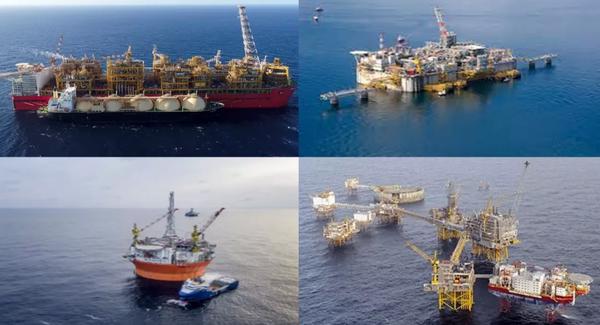Atomic ammonia power plant can make ammonia viable for shipping – Core Power
UK-based nuclear power developer Core Power thinks floating offshore platforms powered by nuclear energy can mass-produce ammonia at a low cost for the green shipping corridors proposed at COP26 last year.
 PHOTO: A variety of possible structure designs for a nuclear-powered floating ammonia production facility. Core Power
PHOTO: A variety of possible structure designs for a nuclear-powered floating ammonia production facility. Core Power
Lack of scalability and deliverability has so far held back ammonia production for the shipping industry, representatives from Core Power told a webinar organised by the company today.
Their answer to overcome these challenges: a floating offshore nuclear power plant combined with an ammonia production plant.
The offshore floating power facility would house an atomic reactor and a power conversion system.
Core Power’s director of analytics Rory Megginson said saltwater would be pumped out of the sea and desalinated using reverse osmosis, with resultant freshwater fed into electrolyser cells to split the water into hydrogen and oxygen. Nitrogen will be captured from atmospheric air.
Producing green ammonia is very energy intensive and requires reliable access to low-cost renewable electricity. Nuclear power can generate sufficient heat and electricity, which can be transferred to a nearby offshore ammonia production plant, he added.
The green ammonia produced can supply ships sailing in so-called “green corridors” between certain ports, and near major shipping hubs such as Houston, Rotterdam and Singapore, said Core Power’s director of business development Tobi Menzies.
Menzies claims ammonia can reduce carbon dioxide emissions by up to 90% on a Houston to Rotterdam voyage.
The price of green ammonia could fall to $300-350/mt in the future. But ultra-cheap clean electricity and capital expenditures (CAPEX) are required to narrow the price gap between ammonia and conventional fuels, he added.
Each of the envisioned atomic-powered floating facilities would initially incur a CAPEX of approximately $4-5 billion, Core Power’s chief executive Mikal Bøe said. But the unit will be more or less self-reliant and can generate green electricity for at least 20 years, operating day in and day out, he added.
A carbon tax of $150/mt that is advocated by several environmental groups is unlikely to reduce the price gap between conventional and green fuels sufficiently on its own, claims Core Power.
Menzies argues cheap and clean electricity is the only way to make ammonia production viable.
The biggest drawback of ammonia is its low energy content. A large container vessel typically requires around 8,400 mt of heavy fuel oil to complete a voyage from the Far East to northwest Europe, whereas 18,100 mt of ammonia will be required to complete the same voyage.
Core Power and the Massachusetts Institute of Technology (MIT) have received initial funding from the US government to study regulations for operating these floating power facilities.





